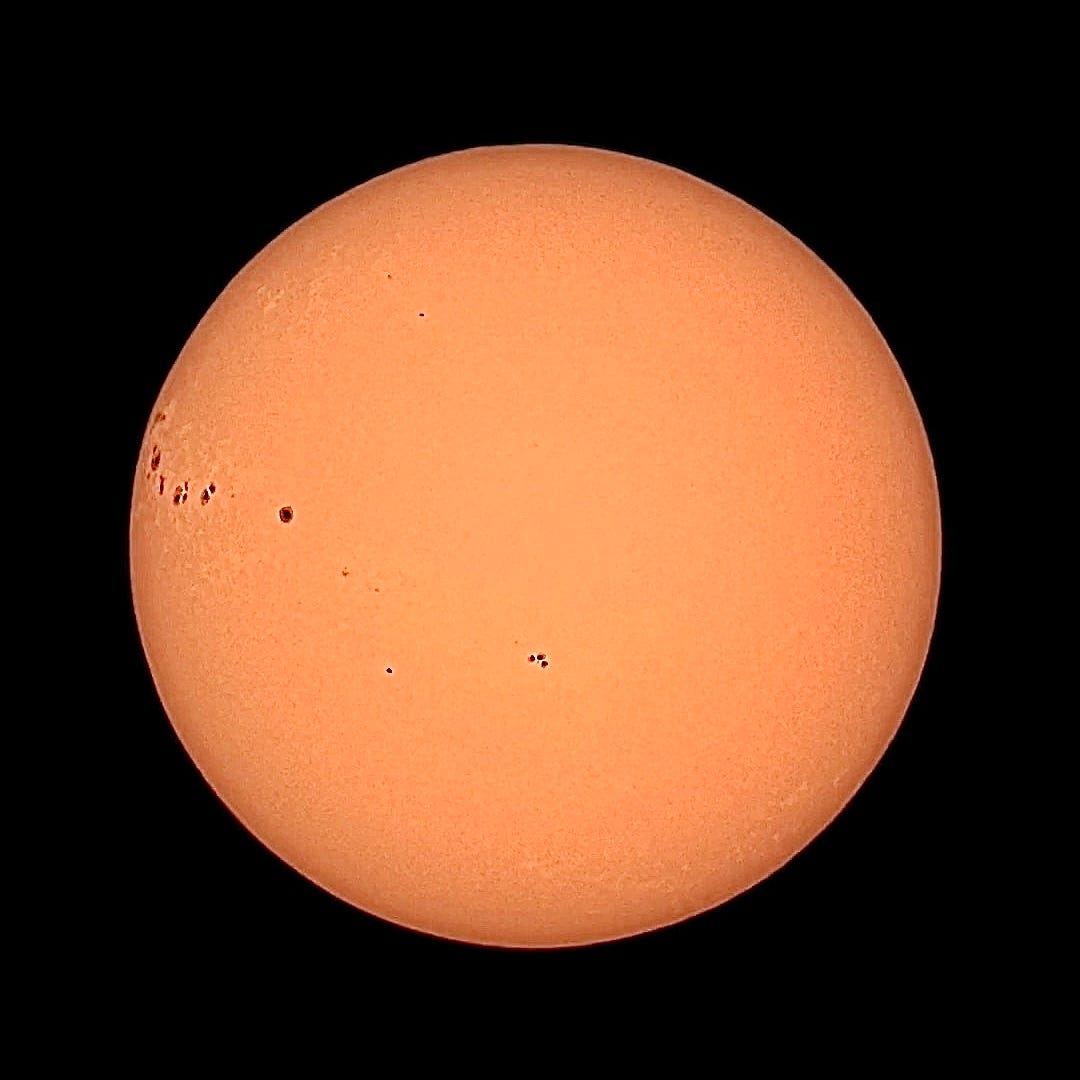The intense X3.3 solar flare originated from sunspot region AR3869 and continued for almost an hour, reaching its peak at 11:57 p.m. EDT on Oct. 23 (0357 GMT on Oct. 24). Extreme ultraviolet radiation from the eruption triggered shortwave radio blackouts over Australia and Southeast Asia.
Is an X flare big? There are five categories that scientists use to classify solar flares, from most intense to least intense. Each letter represents a ten-fold increase in energy output. So an X is 10 times an M and 100 times a C. Within each letter class, there is a finer scale from 1 to 9:
X-class flares are the biggest; they are major events that can trigger radio blackouts around the whole world and long-lasting radiation storms in the upper atmosphere.
M-class flares are medium-sized; they generally cause brief radio blackouts that affect Earth's polar regions. Minor radiation storms sometimes follow an M-class flare.
C-class flares are small with few noticeable consequences here on Earth. At its peak, a C-class flare is ten times less powerful than an M-class flare.
B-class flares are ten times smaller or weaker than C-class flares, still too small to harm Earth.
A-class flares are at least ten times less intense than B-class flares, with no noticeable consequences on Earth.
With this was also a coronal mass ejection (CME), a large expulsion of plasma and magnetic field from the sun’s atmosphere. CMEs travel relatively slow, allowing us time to forecast and warn for their potential impact on telecommunication networks, satellites and power grids. CMEs are also what contribute to the beautiful aurora displays (Northern Lights) we have been fortunate to witness this year.
Will this flare produce more auroras? If this particular flare were directed directly towards Earth, then I would shout a resounding YES! This flare was unfortunately (or fortunately?) pointed away from Earth though, so at best, we may get a glancing blow in approximately two days. Northern states may see some dancing lights this weekend, but it is not expected to extend to the southern states this time around. That doesn’t mean that this region won’t produce more big flares as it comes to face us on its rotation.
Why has this year been so active? We are actually in the peak of what is known as a solar cycle, a natural cycle the sun goes through every 11 years as it transitions between low and high magnetic activity. At the height of the solar cycle (which is now), the sun’s magnetic poles flip and the sun’s magnetic activity goes crazy, creating dark sun spots, solar flares and CMEs. This ‘peak’ can last for approximately a year, but can also have calm durations with little activity.
This video was produced by using an online resource that allows us to watch recorded sun activity, and pull video from any segment of the data that a viewer chooses. I set parameters for the timeframe when the particularly extreme solar flare occurred on October 23, and of course added my own audio in post editing for a little more ‘flare’ (pun intended). You can access that resource here —> https://student.helioviewer.org/
The single image found below was taken with my Seestar telescope a day later, on October 24, showing those dark sun spot regions of AR3869. An interesting fact, while the sun turns and this region rotates out of view, it may again reappear as the sun makes its rotation on its axis in 25-30 days. However, the sun spot name will change as scientists cannot verify they are the exact same regions since they lose total view of them as they rotate to the far side.
Why are these active regions black? Sunspots are dark areas that become apparent at the Sun’s photosphere, a result of intense magnetic flux pushing up from further within the solar interior. The area heats up the upper photosphere and chromosphere. Cooler, less dense and darker areas are then created at the heart of these magnetic fields.
Continue to keep your eyes to the skies folks! From dreamy auroras at night to the colossal fiery activity on the sun during the day, there is always something to see!








Share this post